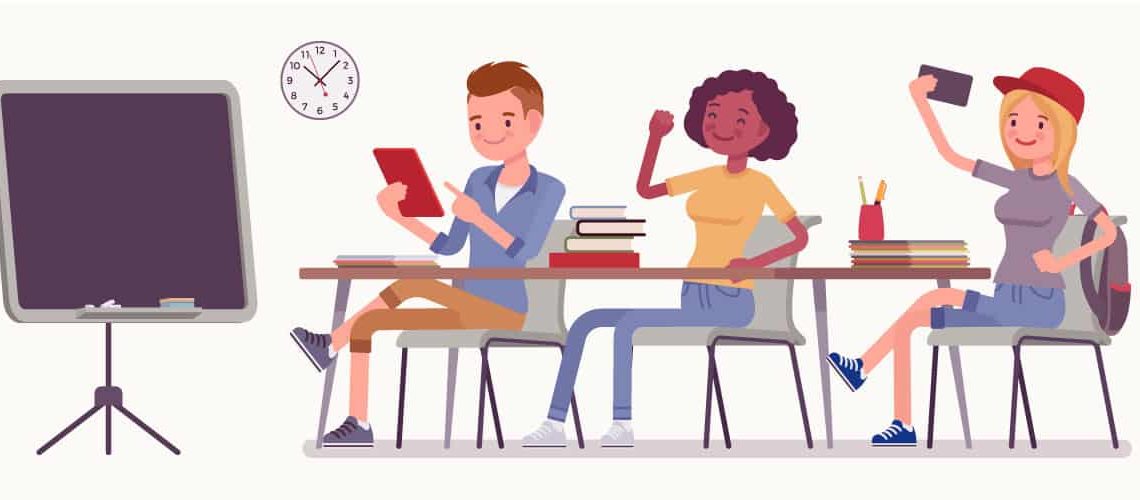
Dyslexic Adults
The Challenge of Learning a Second Language While Struggling with Years of Frustration
Daniella De Winter is the owner of a private English school where we teach children and adults but specialize in teaching students of all ages with language-based learning difficulties including dyslexia. Developer and CEO of SoftEnglish, a brand which comprises books and games which reflect a unique, down-to-earth teaching method. E-mail: softenglisreadwriteplay@gmail.com
www.englishsoftread.com, Facebook: https://www.facebook.com/SoftEnglishhome/
Instagram: @softenglishbooksandgames
Imagine you are a native English speaker who has just landed in Beijing, China, or perhaps arrived by train to a smaller, less international city, and you want to find your way. You look at the signs at the train station or maybe at the airport, trying to find the toilet or the nearest pharmacy, maybe a bookstore with no luck. You go out to the street and try to read the street signs, but hey! You cannot understand their “sign” language. You are getting more and more lost, confused and anxious, even a little worried. You try to ask for help but then again, you don’t speak their language. What’s worse, even if they speak a little English, you don’t seem to be able to understand what they’re saying because they have a different accent…
Well, this is a situation you can easily imagine and even identify with if you have ever travelled to a country where the written language is not the Latin alphabet system. And now let’s think of the opposite scenario where A Chinese speaker is coming to an English-speaking country. He is unable to read the “common” language, getting lost on “our territory.” He is a tourist, a foreigner, who tries to find his way in our English-speaking environment and is unable to read our “signs”. This is a very uncomfortable situation, though temporary.
But let´s now present a third scenario, in which a native English speaker moves to a new English-speaking neighborhood and gets lost. Why? Because s/he is unable to read the long street names in the place s/he doesn’t know. Naturally, this person gets confused, annoyed, frustrated, loses his/her confidence and becomes so nervous and anxious that gets completely disoriented.
What is “wrong” with this person? Why is s/he unable to read the signs and find the way around?
Assuming s/he is not illiterate, one of the reasons that could explain the difficulties in processing written words is dyslexia, which prevents the person from enjoying fluent reading. According to the University of Michigan, “Of people with reading difficulties, 70-80% are likely to have some form of dyslexia. It is estimated that between 5-10% of the population has dyslexia, but this number can also be as high as 17%.”
Being unable to read words one has never seen before or familiarized with beforehand is highly characteristic of dyslexic readers. Despite the fact that someone can often read even long words in his own mother tongue, this doesn’t mean s/he can read names of streets s/he has never encountered before. Why? Mainly because this person lacks the decoding proficiency and phonological awareness needed in order to navigate in an unknown and unfamiliar reading environment. In a Fact Sheet published by The International Dyslexia Association, it is mentioned that “The key symptoms of dyslexia are problems with decoding or single word reading and/or poor reading fluency and poor spelling. Phonological weaknesses or disorders, specific language-based difficulties, are usually the underlying cause of the literacy problems associated with dyslexia.”
So far, we have dealt with the inability to read streets signs and the anxiety that comes with it, but let’s take this difficulty one step further. For those who also want to learn the language, their goal is not only to read signs or avoid getting lost but also to speak the language, to ask for directions, to talk to the taxi driver or with the hair stylist; ultimately, to be able to converse, or even study and later work in this new language.
Those adults who neither speak nor read English often feel lost and hopeless. They have little confidence in their own ability to succeed in learning the language, so they often totally avoid doing so. While in the midst of this avoidance, they build up their frustration as their lack of confidence continues to grow. These layers of frustration accumulate, preventing the person from asking for help. They may eventually ask for help once they are faced with professional or even personal challenges.
Such was the case of one of my female students who was married to a researcher whose career should have been pursued in the United States of America. She was so ashamed of her poor English that she never dared to join him on any of his journeys or meetings. She refused to move to the USA and when she finally started to learn with me she kept it top secret. Her husband never knew she was learning English. She could understand and read English but speaking took its toll. In our first lessons, I spoke English and she answered in her mother tongue. Only after 10 meetings, she started answering in English. After a couple of years, things were getting rough and her husband filed for a divorce. He claimed that one of the reasons was that he couldn´t fulfill his career in the USA because she wouldn´t move there with him due to her language barrier.
I had students in my early teaching days before social media became what it is now, who had been carrying my newspaper add in their pocket for 6 months before they had the courage to call. The frustration and the shame had overwhelmed and paralyzed them. And although reaching out is the first step, the path towards language-learning is long and sometimes very steep and bumpy.
I once had a student who told me at our assessment meeting that it was less embarrassing for him to get undressed in front of me than to have to demonstrate his poor English to me. In general, I have seen that the frustration and the low self-esteem the person usually projects to me in our initial meetings prevent him/her from even trying to overcome the difficulties.
Once this patient, the potential student, contacts me (mostly in a written message), I set up a meeting in which I must show that there is a light at the end of the tunnel and that that light will truly lead to success. I have no more than 15 minutes to prove that things are going to be different: a different way, a different approach and a different method- a new path not yet taken. I try to convey the message that although it is a lesson, it is a therapeutic procedure, an informal friendly and uncondescending procedure. In our first short meeting, I need to prove that this combination of a therapeutic, down-to-earth approach together with a new, out-of-box method will make the change.
Time is of the essence. All I have is a few minutes to show the student that s/he is now able to understand and remembers something s/he didn’t know 5 minutes ago, effortlessly.
One of the most important “ingredients” I put into my method’s “stew” is logic! We all “add” sympathy and relaxation, but due to the difficulty in the language acquisition, we might be misled and thus lower the level of the teaching language. We tend to forget that our “patient” is intelligent (despite his difficulties); that he/she can understand the therapist’s analysis of the situation; that he/she can understand the reasons that led to the point in which he/she is now; and that he/she can also understand the rationale and scope of the method offered. In the words of Susan C. Lowell, “Older students with dyslexia, including adults, can benefit from specialized reading and writing instruction, but it is essential for them to find an instructor who is highly trained to successfully teach individuals with dyslexia.”
This is why I also use reason when I teach. I come up with logical explanations to “defend” the “misbehaviour” of the language, its inconsistency. This might seem a bit of a paradox at first, but the more we base our learning on logic and then practice, the more successful our students become. The more we rely on memorization, the less successful we are since memorizing materials, which are not logical, is one of the things our students tend to find more difficult and fail at.
The first “wall” that needs to be torn down is the wall between the learners and the written language. Simply put, this wall will fall after learning to read. The skill of reading will turn the student, who was, until now, “blind” to the language, into a “seeing” person. The ability to “see” the language will then help in understanding and better remembering the taught material. Before being able to read, the student was “blind” to the language, but now, the newly developed sense of sight, generally crucial in all aspects, will help facilitate the process of learning and enhance it. Thus, the “seeing” person will have much more confidence than the “blind” person.
If I succeed in showing (and proving) my potential student that by following this type of language-learning approach he/she can rely on their own resources, skills, logic and reasoning to thrive and succeed in learning English, then their confidence and self-esteem will flourish like they have never done before.
Students and adults who have experienced (and sometimes endured) dyslexia for so long need lots of support and coaching to understand that they have a unique learning profile. They are by no means, unable to learn a second language. Early diagnosis of dyslexia is essential; we all agree on that. But those adults who have not properly or timely been diagnosed should not be sentenced to a lifetime of frustration. It is our responsibility to understand their uniqueness, make sure they understand it as a uniqueness as well and not as a disadvantage, and make the necessary adjustments and accommodations to teach them English in a new way, which should match their own uniqueness.
